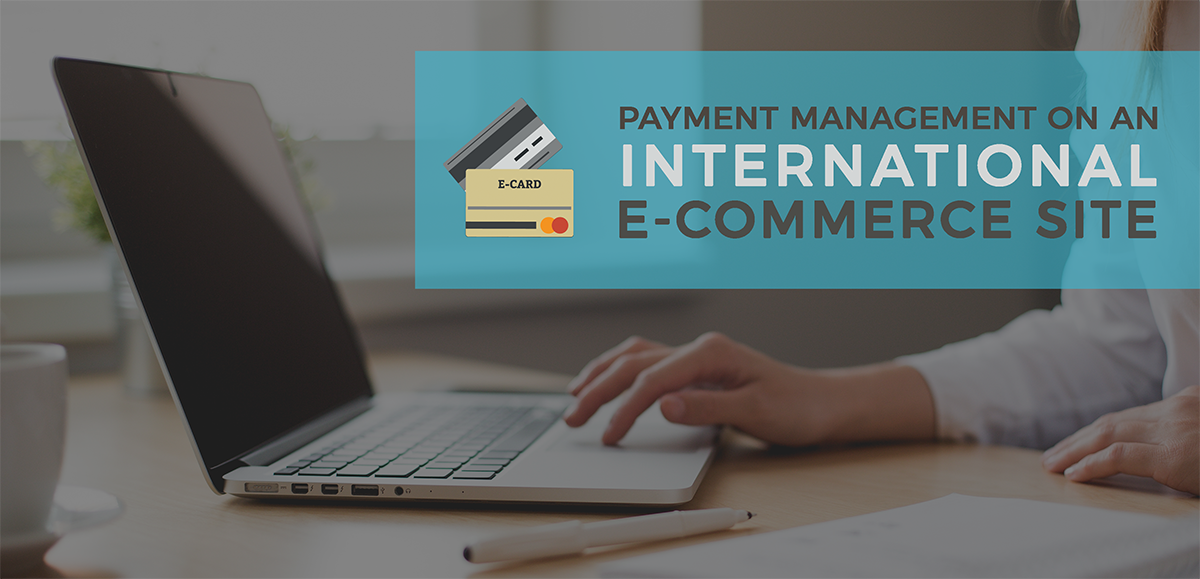70% of online buyers have made a purchase on a foreign site according to the Pitney Bowes Global E-commerce Report 2017. Cross-border e-commerce is therefore no longer just an option for e-retailers: international selling, more than an opportunity, is becoming an essential stage in the growth of an online site. But selling in new markets raises various challenges relating to international time-to-market for products in different countries.
Firstly, from an external point of view: how do you ensure that your site will quickly be visible and become known in foreign markets? manage the product supply chain? Then, from an internal company point of view: how can teams be organised to maximise their effectiveness? improve their productivity? centralise projects to save time?
To accelerate your international time-to-market, while also improving your internal organisation, you will need to meet these different challenges head on:
1 – Respond to cross-border e-commerce logistical challenges
Storage, infrastructures, methods and delivery timelines… exporting your products is about overcoming massive logistical challenges. Luckily, various technological solutions already exist to help e-retailers in these different areas:
Using artificial intelligence for managing stock
It’s obvious: managing stock is one of the major challenges for e-retailers. What can be done to ensure that the right products, in the right quantity are always in the right place, at the right time? The start up Vekia has designed SaaS solutions to optimise stock control. Mostly intended for distributors who have both a physical and digital presence, these solutions operate using demand forecasting via algorithms, calculating the optimum allocation of products per shop and automating restocking. One fewer element of stress for e-retailers wanting to accelerate their international time-to-market!
Improve the e-consumer’s delivery experience
Neopost Shipping allows e-retailers to considerably improve their supply chain at each stage of the sales journey. Firstly, thanks to an automatic packing solution, adapted to each product. Next, via dispatch management software, in order to manage several transporters and offer the most suitable delivery method for each product. Finally, order traceability software will allow both the company and consumer to track the parcel effectively.
Meet the challenge of the final kilometres
Very often, an e-retailer who sells internationally will be hindered at the very end of the supply chain: during the final kilometres that the parcel must travel to reach its recipient. Various start-ups have been created over the past few years to resolve this: Deliv.co in the USA, Deliver.ee in France, tiramizoo.com in Germany… They provide, thanks to a network of local transporters, very fast dispatch of parcels locally.
2 – Optimise the management of your product data
When you deploy in new markets, you are necessarily forced to develop your product catalogue, in order to provide a relevant offering to local targets. Whether you need to translate your catalogue, or list new products available in your new markets, you will need to optimise the management of your product data. Several solutions may allow you to meet these challenges:
Content Management Systems (CMS)
Whether they are generalist or blog-based (WordPress, Wix, Drupal) or e-commerce stores (Magento, PrestaShop…), CMS are geared toward designing and updating your websites. For online stores, they are the software on which your product data is hosted.
PIM software
Quite a lot of e-commerce sites started out as physical retailers, or are also deployed on mobile phone apps. To manage the product catalogues of one company on different channels (product data on e-commerce site or app, paper catalogue, etc.), you can choose a Product Information Management software, such as Akeneo, Quable or Afineo.
By completing as much information as possible on a product, you can increase the conversion rate and reduce the returns rate on your products; you can also, using PIM software, publish each of your products on the channels that are most relevant to your different international targets. This simplified management of your product catalogue is an advantageous factor that can accelerate your international time-to-market.
Localisation platforms
Phrase, Localize, Transifex, Translation Exchange, Locize, LingoHub… the many existing localisation platforms on the market allow you to easily localise the functionality of your website or app. Thus, the UX is harmonised across all linguistic versions. Localisation solutions, which can be directly integrated into your validation process, also help to make product workflows more fluid, for example, the flows between developers and content or globalisation managers. A solution that simplifies life for e-retailers wanting to accelerate their international time-to-market.
3 – Make your localisation and translation workflow fluid
The essential factor to help you reach an international target, is to speak their language. In order to accelerate the placing of your product catalogue in a new market, you will need a partner for the translation and localisation of your content. For increased simplicity and efficiency, you might choose an online translation management platform.
Similar to the many sites where you can place orders online (train tickets, hotel bookings, etc.), these platforms allow you to easily manage your translation projects. From the launch to the delivery, including payment, you can do everything in one easy-to-use interface. These online platforms have several advantages that will ensure your translation workflow stays fluid:
They use a big network of translators
You will therefore have access to thousands of native-speaking, professional, qualified translators, so you can be sure that there will always be one or several translators available and responsive, who are specialists in your area of business.
They centralise your projects and give you independent management of them
Thanks to a user-friendly interface, you can, in just a few clicks, order translations online, obtain transparent fee information instantly, communicate directly with the translators, etc.
They can connect to your system via an API
The systems referred to earlier in this article (CMS, PIM, localisation platforms) can be connected with the API of an online translation management platform. This represents a considerable saving in time and productivity: via your own system, you can thus benefit from all the advantages of an online translation management platform:
- Send content to be translated from your system
- Select your project options
- Choose native-speaker, professional, specialist translators, from a wide network
- Automatic retrieval and integration of translated content
- No manual handling
- Access to the best translation technologies from within your system
Historically, all the big players in e-commerce have had all the necessary resources to sell internationally and therefore have enjoyed an advantage. However, the multitude of available solutions and the coming of Artificial Intelligence now allow all e-retailers, regardless of their size or business area, to accelerate their time-to-market to deploy their sales internationally and gain the same benefits. Don’t be afraid therefore, globalisation is now, more than ever, at your fingertips!
To find out more about translation technologies that can help you accelerate your international time-to-market, download our white paper.







